What do the best events have in common?
They demonstrate quality over quantity. Events that turn your audience into excited fans, trigger deep-rooted emotions, and have an attendee-focused design are the ones to look up to and learn from. Since events are about your audience, you win half the battle by ensuring that they “feel” something at your events.
With that in mind, let’s explore how to strategically create experiences that capture the attention of your audience and leave them wanting more.
Empathy: A power skill to build genuine customer relationship
Contrary to what many think, empathy is not a squishy-mushy soft skill. It is a power skill that can be learned and developed to solve real-world problems. If you know the preferences of your attendees through talking to them, surveying them, and getting them to participate in focus groups, it becomes easier for you to understand what their pain points are and what should be the most appropriate and effective approach to address them.
This not only helps you formulate a ROS using all that information but also builds a rapport with your customers–a genuine human connection. For example, sales become easier when you talk to your prospects with empathy. Telling them a story that directly speaks to the pain points they’ve been trying to alleviate would enable sales personnel to close more deals. That’s a real power skill.
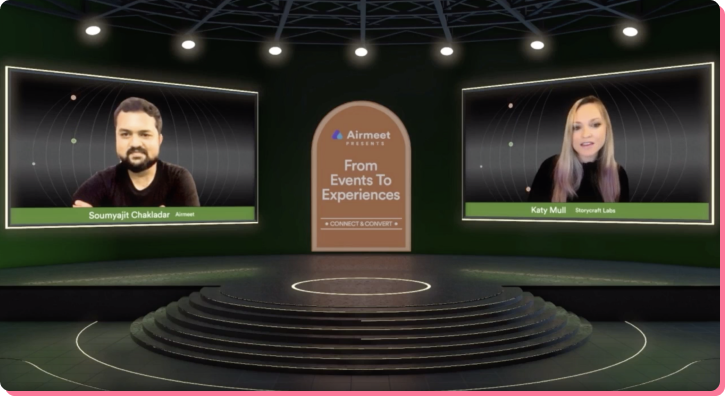
Empathetic event design
With the ever-evolving needs of the audience, your event strategy must fulfill them and become more innovative by utilizing empathetic event design.
- Re-learning through unbiased listening: By listening to your attendees without preconceived biases, you can uncover a lot of information and build a robust understanding of your attendees’ preferences–their behavior, what brings them joy, what makes their day, what empowers them, etc. It’s about asking the right questions.
- Human-centered design: Building archetypes and experience profiles in collaboration with focus groups can be a process that event professionals can experiment with while designing an event. For example, having a quiz right at the registration with a diverse mix of questions or as a registration CTA for your event can help marketers understand who they are catering to, thereby increasing their awareness about the attendee ecosystem in their respective industry.
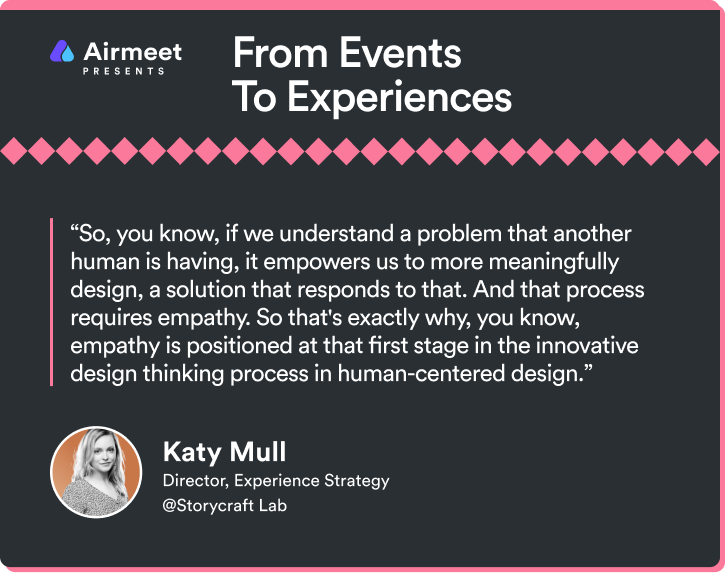
Don't skimp on production
Many commit the mistake of cutting down on production if the event is virtual. But virtual is not a second-class citizen. “Never underestimate the value of great graphic designers”, emphasizes Kyle Lacy, because they run your visual story on screen. Do not skimp on the production budget if you are not holding an in-person event. It will cause more harm than good to the customer experience, thereby affecting your sales.
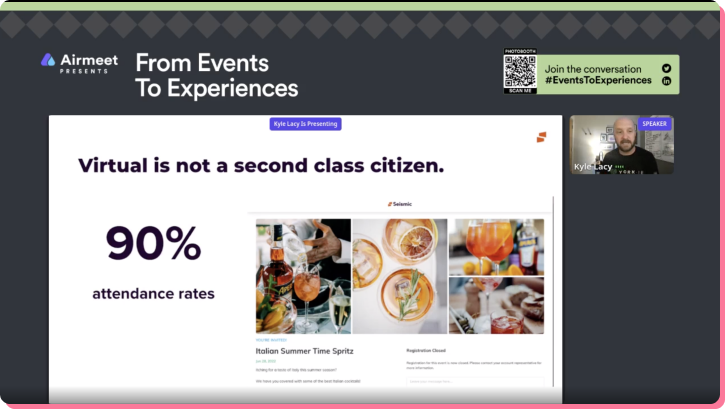
Connect content with your community
Event marketing teams have the power to connect content with community. If planned well, you can leverage a gamification app at your events and utilize its community to share your event content since your audiences attended the event and participated in the interactive sessions. This new community can push your content and help you discover new prospects, new demographics, and a new pipeline to engage with.
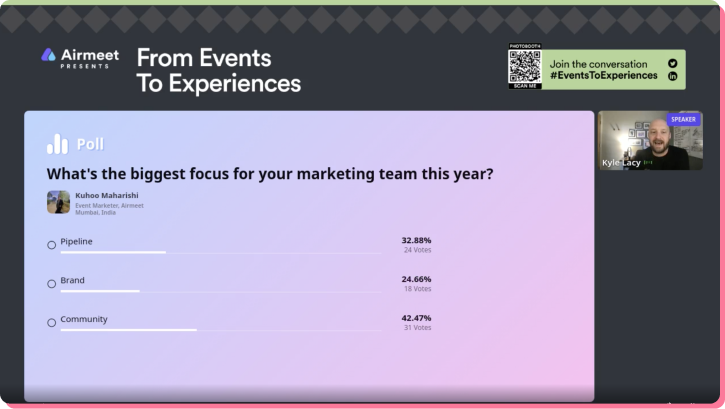
Limit product stories and maximize the personal ones
Your keynote stage should never mention product features. No one comes to the event to know about your product. They might just Google the features if they want to dig into it. People come to events to network and connect on relevant stories. Your event plan can have personal and leadership development stories for your audience. So plan to add a bunch of breaks and a short product session whose conversation can be taken outside.
Repurpose your event content
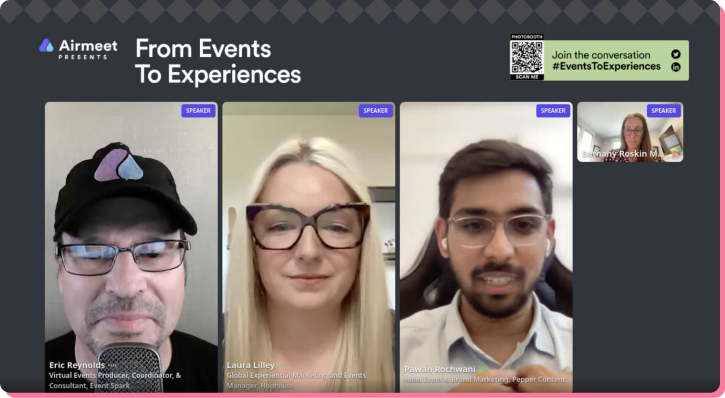
Never shelve your hard work after the event day. If your content is evergreen, repurpose it, share it, and reshare it over some time. From a minute-long clip to a full-fledged YouTube video strategy, you can experiment with everything based on the resources your team has.
With a solid content distribution strategy in place, you can engage audiences through blog posts from sessions’ learning (you’re reading one!), social media posts, and speaker quotes. These are a few examples with which you can maintain the buzz around your event after it gets over.
You can assess positive sentiment around your brand through engagement metrics such as social share, reach, and overall brand voice, which can be shared with leadership for proving the value of your events.
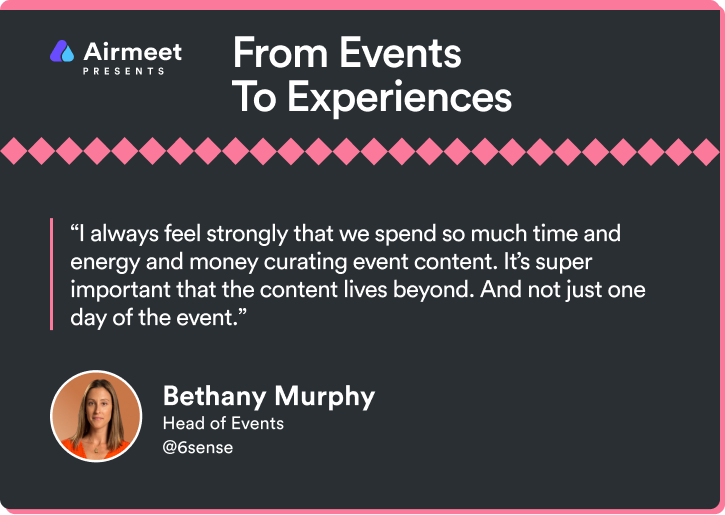
Maintain strong partnership with sponsors for retention
Do you write a sponsorship sheet as an afterthought at the last minute and expect sponsors to show up? Well, that’s one department that demands proactive correspondence.
It is imperative to understand your sponsors’ needs from the event and set clear expectations and rules from the beginning because they will pay for your event and should agree to mutual benefits both parties will derive from the alliance.
Having transparent communication with your sponsors goes a long way. For example, you may not hit the same numbers you promised to achieve from an event, be it your attendee count, social share, or demographics. However, ensuring that you’re communicating this to your sponsors is critical.
Honest communication helps you build a genuine, long-term relationship with them so that you can have them each time you conduct an event.
With that, we won’t call it a wrap!
Watch the From Events to Experience Summit replay here for more anecdotes and personal stories from the experts.





























